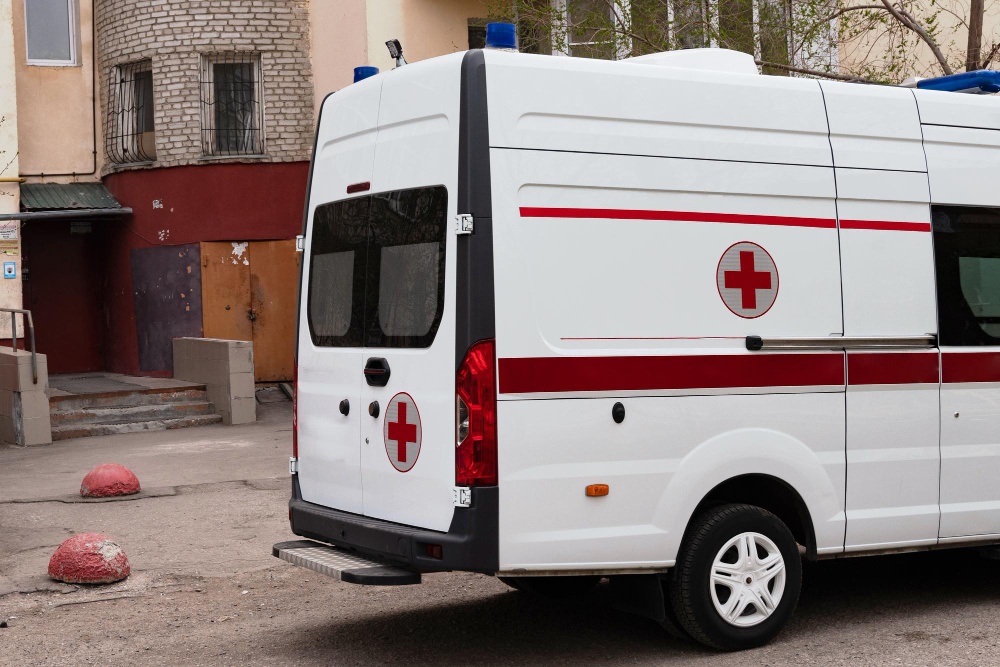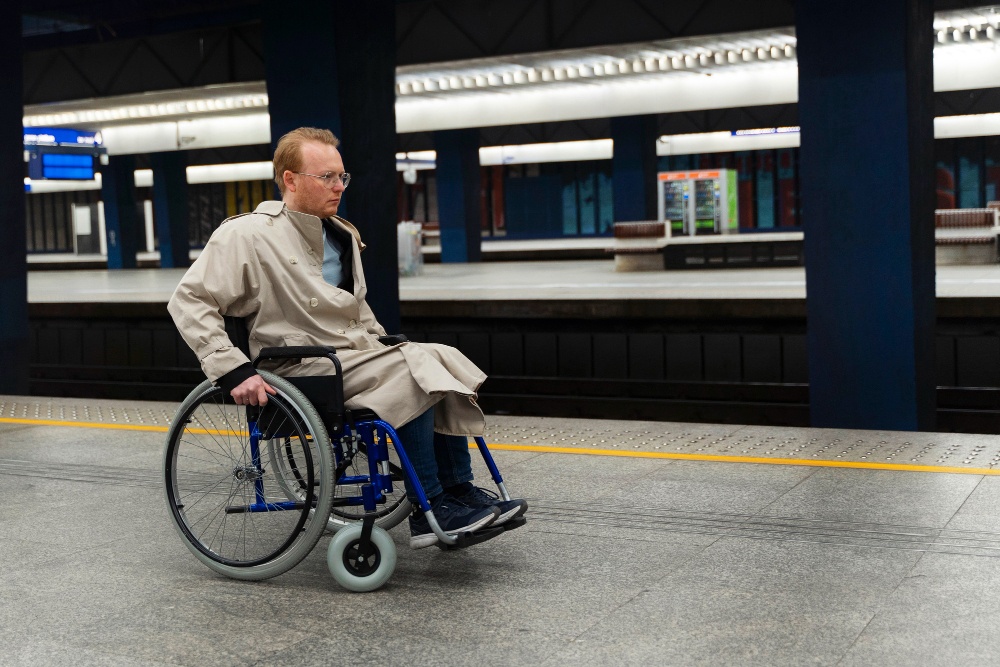5 Safety Procedures for Bariatric Gurney Transportation
Bariatric gurney transportation is a lifeline for patients with limited mobility, ensuring they reac...
Created by: Daniel Ogunsemowo /
Vetted by:
Otse Amorighoye

Bariatric gurney transportation is a vital service that ensures the safe, dignified, and comfortable transfer of patients with high body weight, typically over 300 pounds. With specialized equipment and trained staff, bariatric transportation services offer invaluable support for hospitals, nursing homes, and families needing to transport bariatric patients. However, without stringent safety procedures, this process can pose significant risks to both patients and transport personnel.
This article explores five essential safety procedures for bariatric gurney transportation to help ensure smooth, secure, and efficient transfers. DreamCareRides has established a reputation in Chicago for exceptional NEMT services, and this guide will discuss how following rigorous safety standards like ours can enhance the patient experience.
What is Bariatric Gurney Transportation?
Bariatric gurney transportation is a specialized non-emergency medical transport (NEMT) service designed for the safe transfer of individuals who require a heavy-duty stretcher or gurney. This service is geared toward patients with limited mobility or special medical needs due to their body weight, often requiring enhanced equipment and skillful handling by experienced staff.
The Need for Bariatric Gurney Transportation
Statistics reveal that 42% of adults in the U.S. are classified as obese, making bariatric transportation an increasingly vital service for healthcare providers. Safe bariatric transportation goes beyond merely having a suitable gurney; it also involves the implementation of stringent safety protocols and staff training to ensure patient comfort and minimize risks.
5 Safety Procedures for Bariatric Gurney Transportation
1. Assess Patient Needs and Transportation Requirements
Accurate Patient Assessment
Before any transport, a comprehensive assessment of the patient’s weight, mobility level, and medical requirements is conducted. This includes understanding any respiratory, cardiovascular, or musculoskeletal conditions that may affect their transportation needs. Knowing these details enables staff to anticipate challenges and plan for safe, smooth transfers.
Pre-transport Communication
Communication with both the patient and healthcare providers is crucial. This step ensures everyone understands the specific needs involved in the transportation, any special positioning required, and potential risks.
2. Utilize Specialized Equipment for Bariatric Patients
Heavy-Duty Gurneys
Standard gurneys can’t support the weight of bariatric patients; thus, heavy-duty, adjustable gurneys designed to support 700 pounds or more are essential. These gurneys often have reinforced frames, hydraulic lifts, and advanced shock absorption for added safety and comfort.
Lift Systems and Sliding Sheets
Lifting heavy patients can strain transport personnel, leading to possible injuries. With the right lift systems and sliding sheets, transport staff can safely and efficiently move patients onto and off the gurney, minimizing the risk of injury for both the patient and the staff.
3. Ensure a Trained and Knowledgeable Team
Certified NEMT Professionals
Bariatric transport requires professionals trained in NEMT procedures and bariatric-specific safety protocols. This includes certification in safe patient handling, understanding of medical equipment, and skills to perform in high-stress situations.
Ongoing Training and Education
At DreamCareRides, team members regularly participate in safety training sessions to stay updated on the latest techniques in bariatric transport. Ongoing education ensures that staff remain informed on the safest and most effective procedures for patient transfer.
4. Implement Strict Protocols for Patient and Staff Safety
Weight Distribution and Load Limits
Proper weight distribution on the gurney helps prevent falls or tipping. Staff must ensure the patient’s weight is balanced according to the gurney’s specifications, keeping safety top of mind throughout the transfer.
Protective Gear and Hygiene Standards
Protective gear such as gloves, masks, and gowns are crucial for patient and staff safety, particularly when working with bariatric patients who may have underlying health conditions. Sanitizing equipment between uses is another key aspect of minimizing health risks.
5. Monitor Patient Comfort and Well-Being Throughout Transport
Positioning and Repositioning
For patients who must endure longer transportation periods, it’s essential to ensure their comfort by repositioning them when needed. This helps prevent pressure sores and discomfort, improving the patient’s experience.
Continuous Monitoring
Monitoring vital signs is often required, particularly for patients with complex medical conditions. Ensuring that patients are stable and comfortable is a priority, and our staff is trained to recognize signs of discomfort or distress promptly.
Contact DreamCareRides Today
DreamCareRides is dedicated to providing safe, reliable, and comfortable transportation for bariatric patients across Chicago. Our trained team of professionals, along with our specialized bariatric equipment, ensures that each patient’s journey is secure, comfortable, and dignified. Contact DreamCareRides today to arrange for compassionate, high-quality bariatric transportation.
FAQs
1. What is the weight limit for a bariatric gurney?
Most bariatric gurneys are designed to accommodate patients weighing up to 700 pounds or more. Always confirm with your transportation provider regarding weight capacity.
2. What qualifications do bariatric transport professionals have?
Professionals in bariatric transport often receive certification in non-emergency medical transport, including specialized training in safe patient handling for bariatric care.
3. Can family members accompany the patient during transportation?
In most cases, one family member can accompany the patient, but it’s recommended to check with the transport provider regarding their policy on additional passengers.
4. How is patient comfort managed during bariatric transport?
Trained personnel ensure patient comfort through proper positioning, use of cushioned equipment, and continuous monitoring throughout the transport.
5. Are bariatric gurney transports covered by insurance?
Coverage varies depending on the insurance plan and the medical necessity of the transport. Check with your provider or DreamCareRides for more information.
Conclusion
Bariatric gurney transportation is a lifeline for patients with limited mobility, ensuring they reach medical facilities safely. With an emphasis on patient safety, specialized equipment, and skilled professionals, bariatric transportation is essential to the healthcare system. DreamCareRides adheres to the highest safety standards to offer patients the best experience possible.
For a reliable and compassionate bariatric transport service, reach out to DreamCareRides today. Let us handle the logistics while you focus on what matters most—your health and comfort.
Related Articles
Recent blog posts

Daniel Ogunsemowo
Nov 08, 2024
Medical Transportation
7 Things to Consider Before Booking NEMT for Dialysis Appointments
When it comes to dialysis treatment, transportation is essential. ...

Daniel Ogunsemowo
Nov 08, 2024
Medical Transportation
How NEMT Supports Post-Surgery Care
Post-surgery recovery often demands strict adherence to healthcare schedules for follow-up visits, p ...

Daniel Ogunsemowo
Nov 07, 2024
Medical Transportation
10 Illinois Medicaid Transportation Providers: Top Choices for NEMT Services
In Illinois, access to healthcare depends on the availability of reliable transportation for Medicai ...

Adeshola Bello
Nov 04, 2024
Medical Transportation
Essential Airport Transportation Tips for Disabled Travelers
Traveling can be an exciting adventure, but for disabled travelers, it often comes with unique chall ...

Daniel Ogunsemowo
Nov 04, 2024
Medical Transportation
Ensuring On-Time Medical Appointments for Chicago Patients with DreamCareRides
Every year, thousands of Chicago patients face the challenge of reaching their medical appointments ...

Daniel Ogunsemowo
Nov 04, 2024
Medical Transportation
10 Meaningful Ways to Spend Quality Time with Your Grandparents During Christmas
The holiday season is the perfect time to create lasting memories with your loved ones, especially g ...